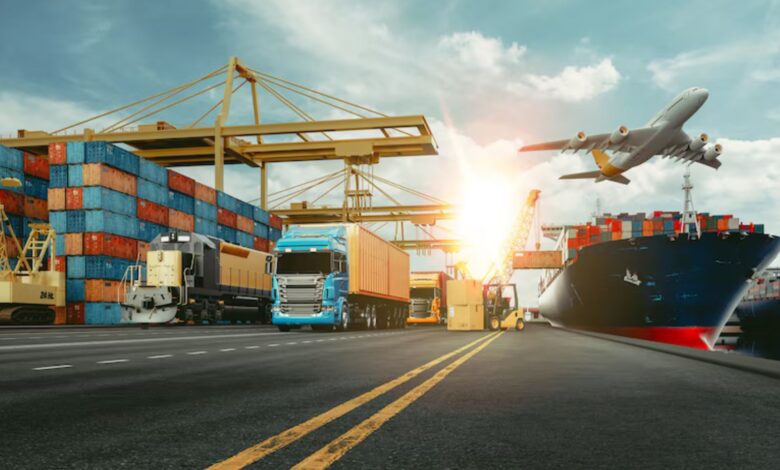How Textiles Industry Impact Global Trade and Economy?

Similar to the vibrant strands in a tapestry, governmental initiatives significantly influence the textiles industry’s environment. These initiatives, which include subsidies and incentives, offer essential assistance to both aspiring entrepreneurs and well-established market participants. For example, tax incentives may serve as a catalyst for innovation by stimulating investment and cultivating expansion within the industry. Plus take any manufacturer, such as the T & A textiles shop in Manchester serves as a vibrant hub, weaving together local craftsmanship with global trade dynamics.
Increase in Investments:
Investments are critical to the survival of any sector, including the textiles industry. The continuous infusion of capital enables the sector to advance by implementing state-of-the-art technologies and penetrating untapped markets. Consider a revolving wheel through which basic materials are transformed into gold, with each investment contributing a thread to the tapestry of economic expansion.
Technology:
Comparable to that of an expert weaver, technology has brought about a paradigm shift in the textiles sector, redefining conventional approaches and unlocking boundless opportunities. Through the implementation of automated weaving and 3D printing, innovation has permeated all facets of production, optimizing procedures and increasing output. It is comparable to an instantaneous transformation from a handloom to a cutting-edge textile facility.
E-commerce Platforms:
Global consumers prefer e-commerce platforms as their primary marketplace in the current digital age. By virtue of a few simple mouse strokes, consumers are able to peruse an extensive assortment of garments and fabrics, surpassing the constraints of geography and time zones. It is as if one were in possession of an instantaneous global emporium, where each click initiates an economic transaction.
Sustainability:
Sustainability in the textiles industry is no longer a trendy term, but rather a fundamental principle. Developing this practice into a flourishing garden of environmental stewardship and social responsibility is analogous to sowing seeds of change.
Country-Specific Insights:
Diverse countries throughout the world provide distinct perspectives on the textiles sector, with each making a distinct contribution to the worldwide good quality fabric of commerce and economy. Diversity influences global trade from the sophisticated technological textile manufacturing centers of China to the intricate hand-woven textiles of India. Comparable to a patchwork fabric, in which each individual seam narrates a tale of courage, innovation, and tradition.
Global Manufacturing Rejuvenation:
The textiles industry is currently leading the way in this reconfiguration of the worldwide manufacturing landscape. While established manufacturing powerhouses embrace emerging technologies, these markets capitalize on the chance to establish a distinct presence on the international platform. It is comparable to a phoenix that reinvents itself and ascends to greater heights of prosperity.
Risks and Opportunities:
Similar to any other sector, the textiles industry possesses both opportunities and threats. But each obstacle presents a prospect for growth, adaptation, and innovation in a market that is perpetually changing. It resembles navigating turbulent waters, where each wave presents potential dangers and opportunities.
Digital Transformation:
As a result of digital transformation, the textiles industry is discovering uncharted territories and reorienting its business operations and consumer interactions. Technology is integrating AI-driven trend forecasting and virtual fitting rooms into the retail landscape, creating a digital tapestry that surpasses the limitations of conventional retail. Engaging in this experience is akin to entering an infinite wardrobe, where each selection uncovers a realm of potentialities.
Navigating Challenges:
There are a lot of chances for expansion in the textile sector, but there are also a lot of problems. They are like expert weavers: they deftly negotiate the market’s intricacies, changing tactics as needed to come out on top.
Community Impact:
 The textile industry is vital to the social fabric of communities all across the globe, and not only because of its economic importance. Textile companies are an integral part of society since they create jobs and provide a hand to local artists and craftspeople. Ethical sourcing, fair labor standards, and community development programs improve working conditions for employees and their families, which has a multiplicative effect that improves society at large.
The textile industry is vital to the social fabric of communities all across the globe, and not only because of its economic importance. Textile companies are an integral part of society since they create jobs and provide a hand to local artists and craftspeople. Ethical sourcing, fair labor standards, and community development programs improve working conditions for employees and their families, which has a multiplicative effect that improves society at large.
Conclusion:
As a final observation, the textiles industry serves as the fiber that unifies economies, nations, and cultures, and is not merely an integral part of our daily existence. Consequently, as we commence this voyage towards development, metamorphosis, and affluence, let us thread meticulously, guided by foresight, fervor, and intention.


